Sino-Japanese War of the 20 century. On the peculiarities of combat operations and the tactics of the parties. H. 1
We would like to tell about some of its features.
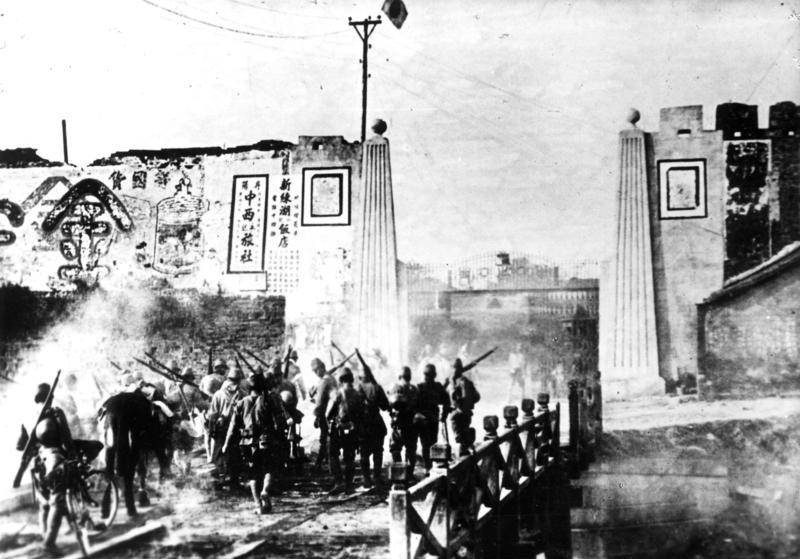
1. Japanese troops in the vicinity of Danian. December 1937
First of all, it is necessary to take into account the difference in the state of the armed forces of Japan and China. For several years, the Japanese army was preparing for a major war, and in its organization and armament was approaching the armies of European countries (in particular, it was saturated with a relatively significant amount of equipment, having in its composition tank and motorized parts, a large number of aircraft, etc.).
On the other hand, the Chinese army for a long time did not constitute a serious force, and was very far from the modern European models. Each province had its own troops, not subordinate to the central government. The organization and armament of the army were very diverse. The technical equipment of the army was unsatisfactory. Characteristic of the training of the Chinese army was the fact that both the central government and the governor-generals of the provinces invited foreign military instructors - Germans, Japanese, Italians, Swedes, etc. It is known that the army of the Nanking government trained for several years German General Sect with a group of German officers. All this determined the heterogeneity in the preparation of various parts of the Chinese army.
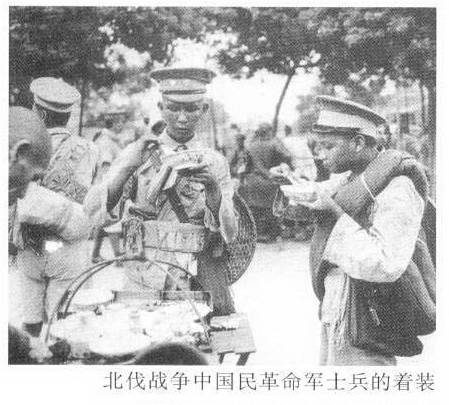

Above and below are the types of Chinese soldiers. 1920-30
Only in 1934 - 1935. The central Chinese government set about reorganizing the army and uniting it with a single command. Despite the resistance of the governor-generals, who saw usurping their rights in this event, despite the subversive work of the Japanese group in the Guomindang, the central government of China, relying on the democratic forces of the country, managed to implement a number of serious events. 18-ti divisions (the so-called "Nanking"), on their organization and training approaching the divisions of the European armies. Abroad were purchased in fairly large quantities. weapons, initiated the creation of its own military-industrial base.
But by the beginning of the war, that is, by mid-1937, the Chinese army was significantly inferior to the Japanese - especially in terms of tank troops. Possessed by Japan and a strong naval fleet.
It should take into account a number of specific features of the theater.
China occupied vast territories, which made it possible for the Chinese government to conduct a war of the widest scope, designed for defensive maneuver and forcing the enemy deep into the territory, while the latter was exhausted during the hostilities - for the subsequent transition to a general counterattack in order to completely defeat the presumptuous aggressor. Large reserves of valuable minerals, and above all the necessary strategic raw materials, were located not only in the eastern part of China, but also in its deepest provinces - in particular, in the provinces of Yunnan, Guizhou, Sichuan.
The huge population provided the Chinese national government with virtually unlimited mobilization opportunities. Japan has no such resource. Attempts by the Japanese government to rely (in a mobilization respect) on their colonies - Formosa, Korea and Manchuria - did not bring any significant results.
Being very extensive, the territory of China was characterized by a significant variety of relief. If the eastern provinces of China are mostly characterized by soft flat terrain, in the western and northwestern parts of China, the relief is mainly mountainous, making it difficult to effectively use certain types of military equipment - tank forces, heavy artillery, etc. And poor technical equipment Chinese retreated into the background.
A characteristic feature of the Chinese theater was the poverty of the railways and good dirt roads. This gave the war in question the character of actions along railways and improved dirt roads. The main groups of Japanese troops operated mainly along these highways. In addition, the limitations of railways led to a fierce struggle for the possession of separate railway lines. So, fierce battles were going to seize the Lunkhai railway and the Hankow-Canton line.
Conducting operations only along individual directions determined the enormous length of the battle front, reaching about 3500 km. Difficulties in carrying out large-scale maneuvers using railway lines, in using heavy means of suppressing the enemy and in organizing the delivery of supplies left a serious imprint on the operations. An important characteristic of the Chinese theater of operations was the presence of large navigable rivers connecting the ocean coast with the internal territories (the Yellow River, Yangtze, Xi Jiang). This allowed the Japanese invaders to make wide use of their navy, giving them an advantage over the Chinese army.
But the shipping part of the Yangtze ended in the Hankow region; R. The Yellow River was navigable for large vessels only up to the Baotou area (above — navigable only for small steamers and Chinese junks with a carrying capacity of 6 - 7 tons), and p. Xi for the major military ships was navigable only in its delta.
The Japanese attempt to apply the concept of "total war" in China failed. The Japanese military used terrorist methods of warfare - associated with the massacres of civilians and prisoners of war. Intimidation is an important element of such actions. Actions were key aviation against the peaceful defenseless cities, villages and ports of China. The regular barbaric raids of Japanese aviation were accompanied by hundreds of killed and wounded civilians, with a significant percentage of these victims being women and children. Japanese ground troops acted in the occupied territory with no less cruelty - villages were destroyed and burned, dozens and hundreds of innocent civilians were shot and Chinese women were raped.
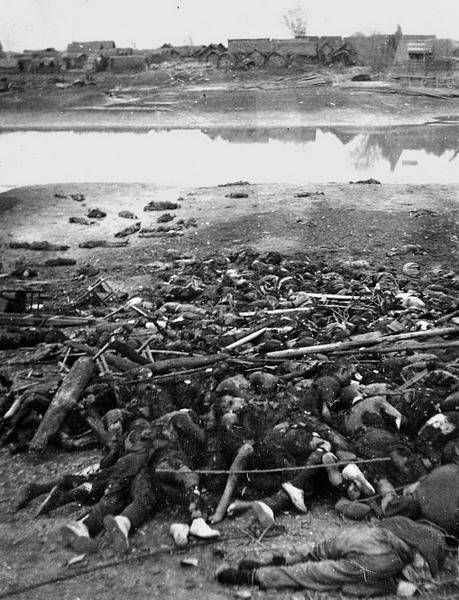
8. Nanking Massacre. The Chinese are victims of the Japanese military.
But the methods of “total war” only dragged new broad strata of civilians into the armed struggle against the perpetrators, broadened the base for the development of the people's partisan war. Extremely characteristic is the letter of one officer of the Japanese detachment operating in China. This officer wrote: “In the mountains, troops of the Hong-Jiang-Hui (Red Rifles) often roam. It is necessary to pay attention even to children and women. A few days ago, one sixty-year-old woman threw a grenade into our unit. Several people were injured and killed. ”
The figure of this sixty-year-old woman with a grenade in her hand actually symbolized the scope and universality of the popular anti-Japanese movement.
The guerrilla movement in China took on an absolutely unprecedented scale and turned into a genuine popular war. According to far from complete calculations of foreign observers and the Japanese General Staff, in China at the end of the 30s. acted about 1 million partisans. The PLA 8 Army in the northern and northwestern parts of China and the PLA 4 Army in the Shanghai - Nanking region actively cooperated with the partisans. A huge number of various armed detachments from peasants, workers, students (“Red peaks”, “Great swords”, “Red rifles”, detachments of peasant self-defense, etc.) attacked the Japanese. Moreover, the detachments often acted not separately, but according to operational plans with the troops. To carry out responsible tasks, detachments of several thousand people were sometimes set up in the rear of the Japanese army — and the Japanese were forced to use entire divisions to combat these detachments, but as a rule without success. So, in 1939, during the operation against the mountainous Utayshan region, the Japanese command used 50000 people, reinforced by appropriate technology. But the Chinese, skillfully using the terrain, using their tactical techniques gained in practice (which we will discuss in more detail later), defeated many Japanese troops, inflicted significant losses on them (about 7000 people) - and the Japanese command was forced to stop the operation.
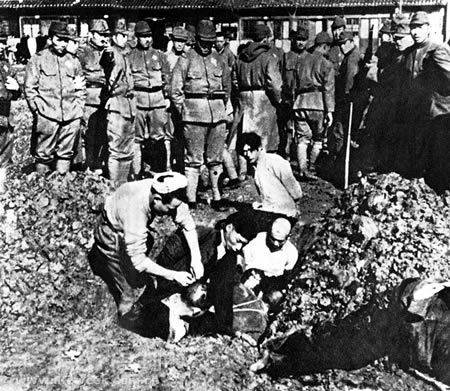
9. The peaceful Chinese are victims of Japanese executioners.
Some numbers. Only for the period from September 1937 to May 1938. The 8 Army inflicted the following losses on the Japanese: killed and wounded - 35000 people, captured by 2000 people; repulsed - about 7000 rifles, 500 machine guns of various systems, 80 field guns, about 2000 horses, and as many pack animals; destroyed more than 200 aircraft, 20 tanks and 1000 vehicles.
Over the three autumn months of 1938, according to Japanese data, in Xinjiang province alone, an 321 fighting took place; The total number of partisans participating in these battles is more than 20000 people.
In the southern part of Jeho, three large partisan detachments with a total number of up to 7000 were operated - 8000 people. The detachments established operational communications with the Chinese troops fighting in the northern part of Hibei Province. The entire population of Inner Mongolia has risen against the Japanese invaders.
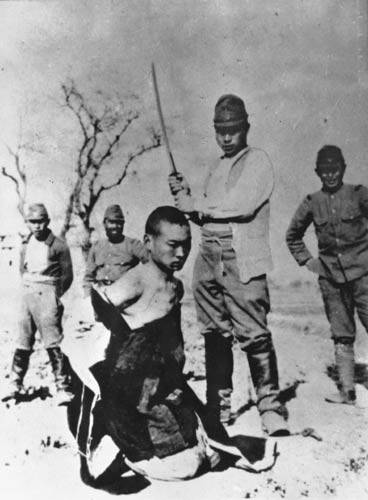
10. One of the victims of the Nanking massacre. Execution by the Japanese of a Chinese soldier. After the capture of Nanking in December 1937, the Japanese exterminated all Chinese prisoners of war captured during the Nanking operation - 57500 people.
The 4 Army PLA, which in April 1938 numbered 12000 people, grew in 1939 g. To 60000 people. Partisan operations developed to the west - along the r. Yangtze.
Thanks to the interaction of partisans and troops, the pace of development of the Japanese offensive from Nanking to Hankow has slowed down. A vivid example of the brilliant interaction of the Chinese army with the partisan detachments was demonstrated by the fighting in the Canton area.
Продолжение следует ...
11. Chinese military personnel
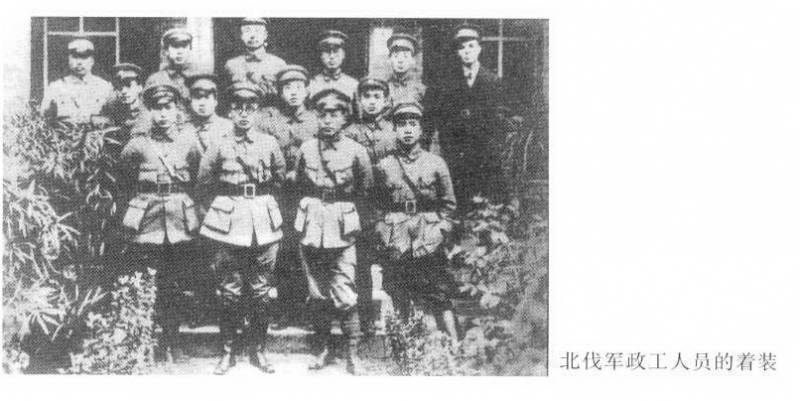
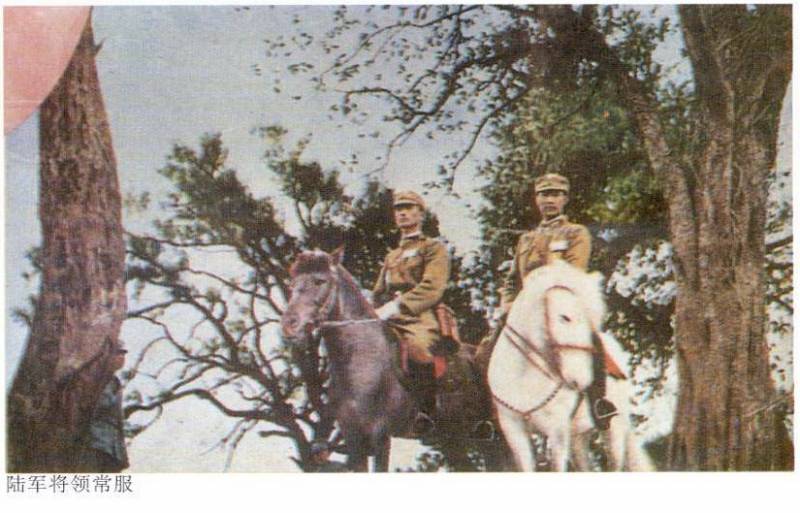
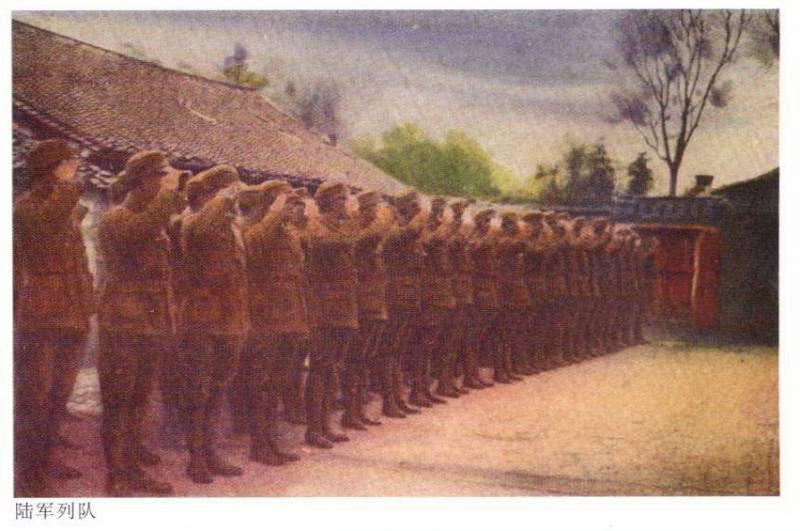
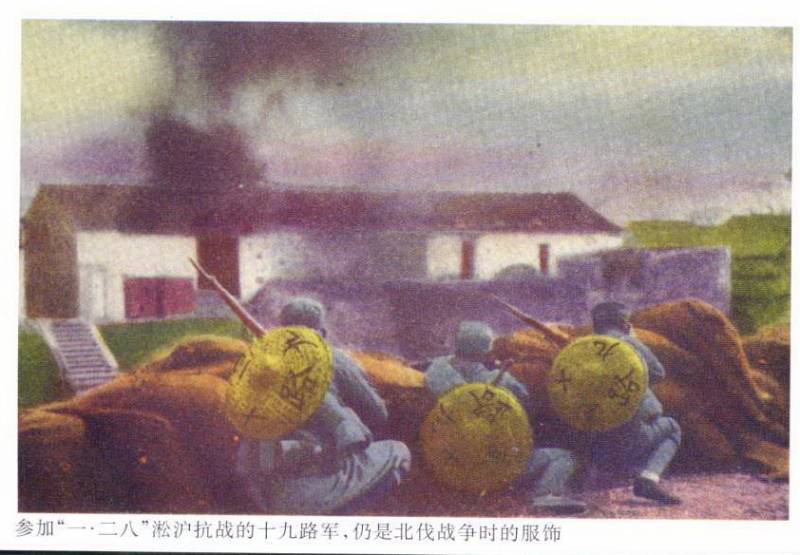
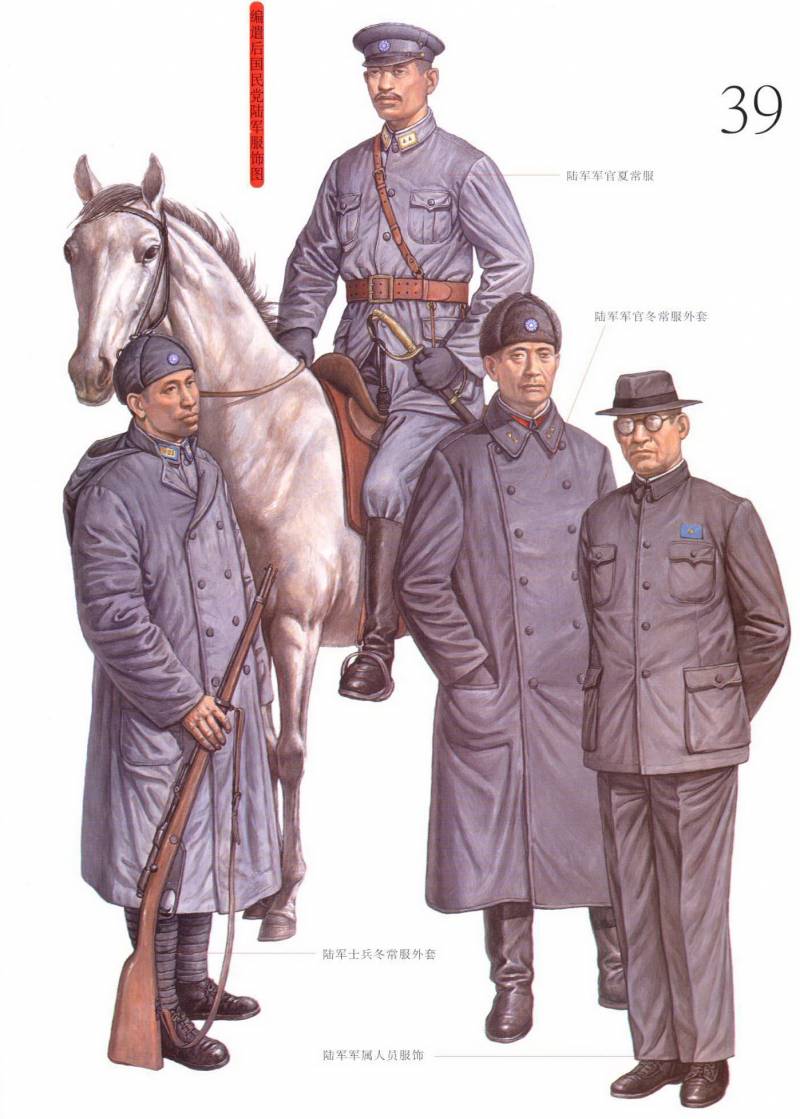
Information